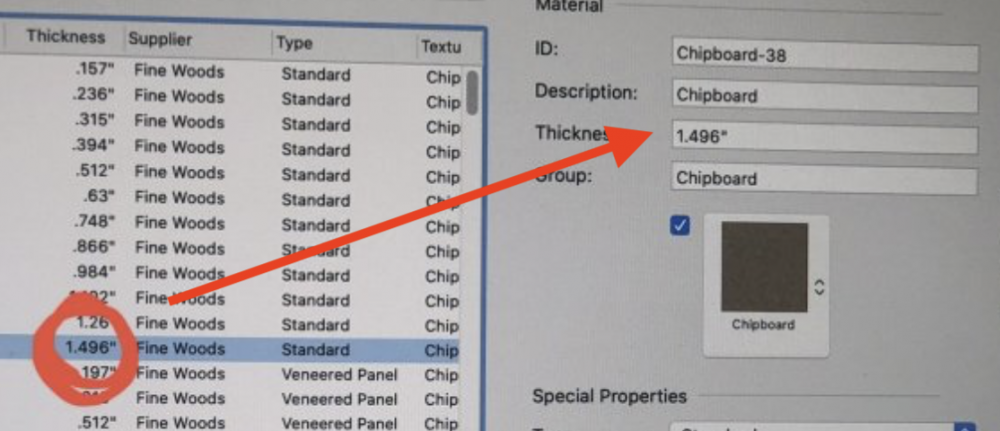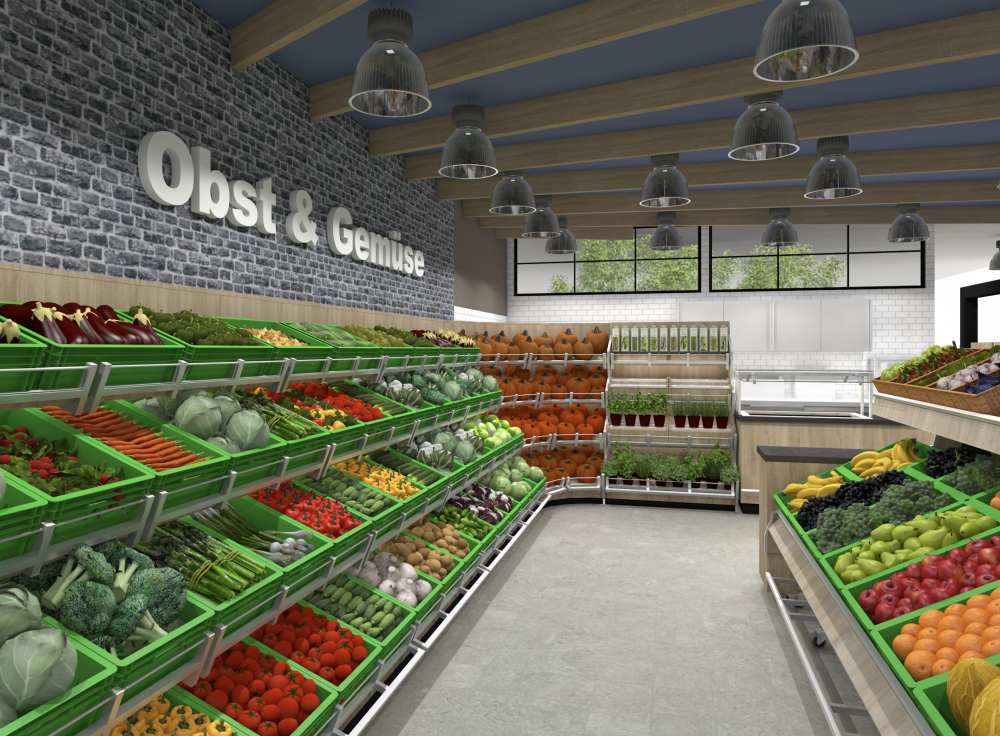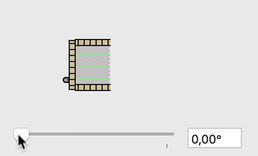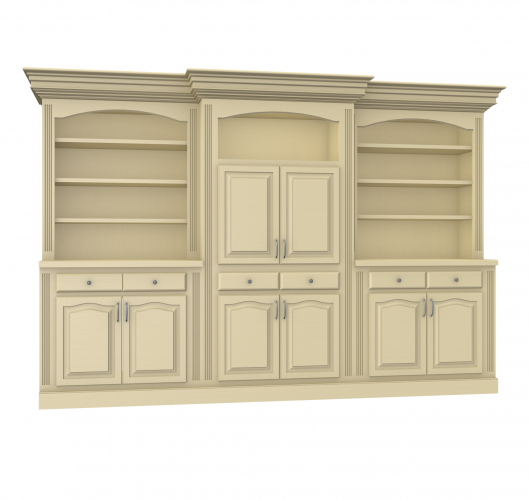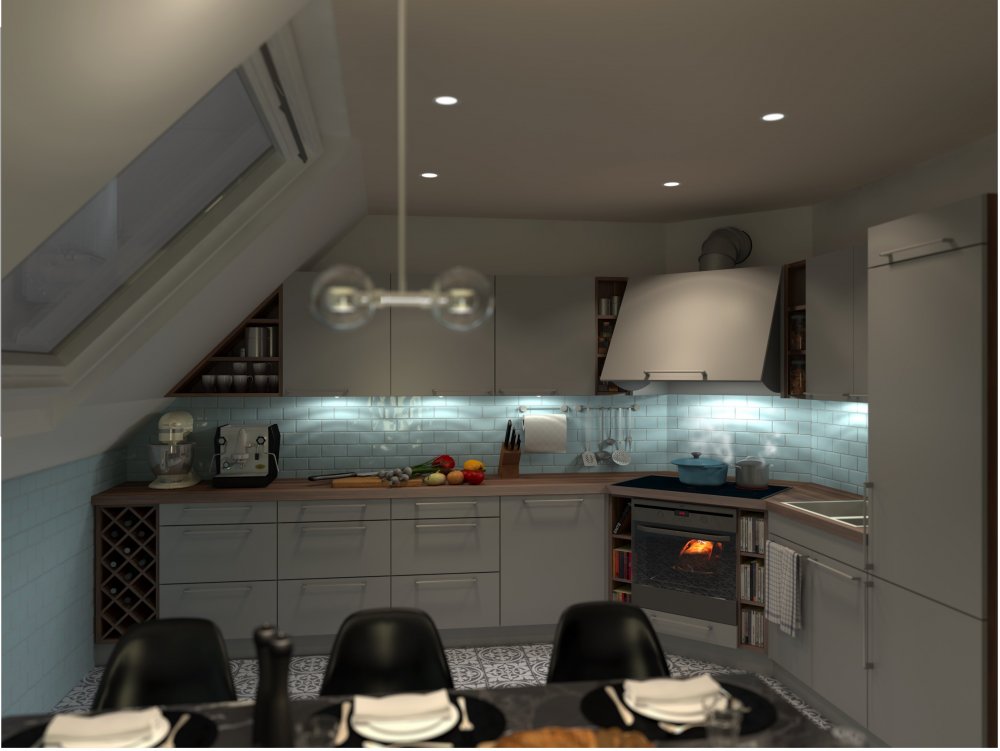-
Posts
1,331 -
Joined
-
Last visited
Content Type
Profiles
Forums
Events
Articles
Marionette
Store
Everything posted by Stephan Moenninghoff
-

Cabinet Drawers
Stephan Moenninghoff replied to khumenny's topic in Wishes Granted / Issues Resolved
Hi Annabel, here you go: https://downloads.extragroup.de/en/interiorcad/interiorcad2021-E-Win.zip https://downloads.extragroup.de/en/interiorcad/interiorcad2021-E-MacOS.zip -

Cabinet Drawers
Stephan Moenninghoff replied to khumenny's topic in Wishes Granted / Issues Resolved
Ah, it looks like the class that the profiles are kept in needs to be hidden in the viewport. Look for "XG-Custom Part Routing-Profile" and hide it. We have also identified a problem whereby profiles get applied to the wrong part if you have more than one frame in the same cabinet. This will be resolved soon. I will post a new build once it's done! You cannot create L-shaped cabinets with the current version. It is one of the bigger stories we will tackle for the forthcoming releases. (not just L-shaped cabinets. Corner situations in general). -
Apparently so. Cheers for confirming, @Senthil Prabu! We were just wondering why this was not announced with more fanfare. It seems like a big deal. Anyway: THANKS! 🙂
-
@Bas Vellekoop That does indeed look like an undocumented feature. I just checked this with a geometry several levels deep and even a symbol within a symbol and I was not able to break it. This is quite unexpected. But very welcome.
-

Cabinet Drawers
Stephan Moenninghoff replied to khumenny's topic in Wishes Granted / Issues Resolved
Thank you! I will! -

Cabinet Drawers
Stephan Moenninghoff replied to khumenny's topic in Wishes Granted / Issues Resolved
What is a bevel corner to you? We support custom profiles for both inside and outside edges of a stile or rail. You can make that a bevel. -

Cabinet Drawers
Stephan Moenninghoff replied to khumenny's topic in Wishes Granted / Issues Resolved
Kevin, the answer is quite simple:- interiorcad's objects are all designed to be actually manufactured. Therefore, grain direction is absolutely crucial to every single piece because if you flip grain direction for a piece, its length and width will also flip in the parts list. Vectorworks' doors are not designed to be manufactured so the focus is not on that level of detail. Evidently, Vectorworks has been focusing more on interior design of late and I imagine that comments from interior designers might lead to some improvements in this area. -

Cabinet Drawers
Stephan Moenninghoff replied to khumenny's topic in Wishes Granted / Issues Resolved
Yes. 100% -

Cabinet Drawers
Stephan Moenninghoff replied to khumenny's topic in Wishes Granted / Issues Resolved
Yeah, should be ok. Message me off list and I will put something together for you. -

Cabinet Drawers
Stephan Moenninghoff replied to khumenny's topic in Wishes Granted / Issues Resolved
You are very welcome. interiorcad has always looked at materials as a combination of the actual physical material (and its thickness, cost, grain direction etc.) PLUS the Renderworks texture. We have quite a lot of users who actually produce the cabinets and parts that they model in Vectorworks so it needs to be a one-stop solution. Anyway, thanks for persevering. I think you have identified a few places where our UX is plain lousy and I have an idea how to fix that. -

Cabinet Drawers
Stephan Moenninghoff replied to khumenny's topic in Wishes Granted / Issues Resolved
Click on the label-link. In the dialog that pops up, start typing the material in the search field (in your case, "Chipboard-38"). The choice of materials will narrow down as you type more characters. Double-click "Chipboard-38" and you're all set. (I sincererely hope that you are but let me now if not) 🙂 -

Cabinet Drawers
Stephan Moenninghoff replied to khumenny's topic in Wishes Granted / Issues Resolved
-

Cabinet Drawers
Stephan Moenninghoff replied to khumenny's topic in Wishes Granted / Issues Resolved
I can see what you are doing there. You are trying to assign a one-off material. That's perfectly fine when you want one individual piece to have a different material than what has been assigned to that type of part in general. Try this: go to the "Construction" tab and assign a material to the shelf (or fixed shelf, I cannot really see which one it is). That should give you what you need. -

Cabinet Drawers
Stephan Moenninghoff replied to khumenny's topic in Wishes Granted / Issues Resolved
Final release is scheduled for next week (week of Dec 7). -

Cabinet Drawers
Stephan Moenninghoff replied to khumenny's topic in Wishes Granted / Issues Resolved
I see the problem. The label for the material is actually a link that can be clicked on. Enabled links will be shown in blue. You have selected a part that does not (yet) exist in your cabinet model. Click on side/stile and the labels should turn blue and become clickable. -

Cabinet Drawers
Stephan Moenninghoff replied to khumenny's topic in Wishes Granted / Issues Resolved
@Habitat43 so you have two questions: 1.) How to change the thickness of a material? You seem to have found the master data. Any material you have defined in the master data can be used anywhere in the cabinet and also in a standalone part. Assign the material to the parts (last page in the cabinet object's dialog) and you should be all set. 2.) You want framed fronts. This will be possible in the upcoming version of interiorcad (2021) which we will release very shortly. You will also be able to use profiles for stiles and rails and for the panel. -
BTW the object arrays are all done via Marionette. Each green box has a Marionette of just a single symbol which is scaled, rotated and displaced with controlled random values. It's the next best thing to a real gravity and collision control function which Vectorworks does not have.
-
I found a source for 3d-scanned objects: https://sketchfab.com/. Stumbled upon these guys while looking for vegetable symbols. As always, quality varies but generally very good. Some free objects, some paid for. This is a rendered viewport.
-

Cabinet Drawers
Stephan Moenninghoff replied to khumenny's topic in Wishes Granted / Issues Resolved
-

Cabinet Drawers
Stephan Moenninghoff replied to khumenny's topic in Wishes Granted / Issues Resolved
Hi Kevin, you will need Vectorworks 2021 for interior xs 2021 to run. 2021 actually makes a few things a lot snappier, especially redraw and OpenGL so don't hold back! -

Cabinet Drawers
Stephan Moenninghoff replied to khumenny's topic in Wishes Granted / Issues Resolved
-
I have downloaded some very good objects from https://archive3d.net. The vegetables and cookie jar and even the roast turkey was from there IIRC. You need to try them out though. Some are good, others aren't.
-
Sorry, I forgot that part. Yes, of course you need a none fill and then you set it to filled after the extrusion.
-
Awesome. Did you model that yourself?




